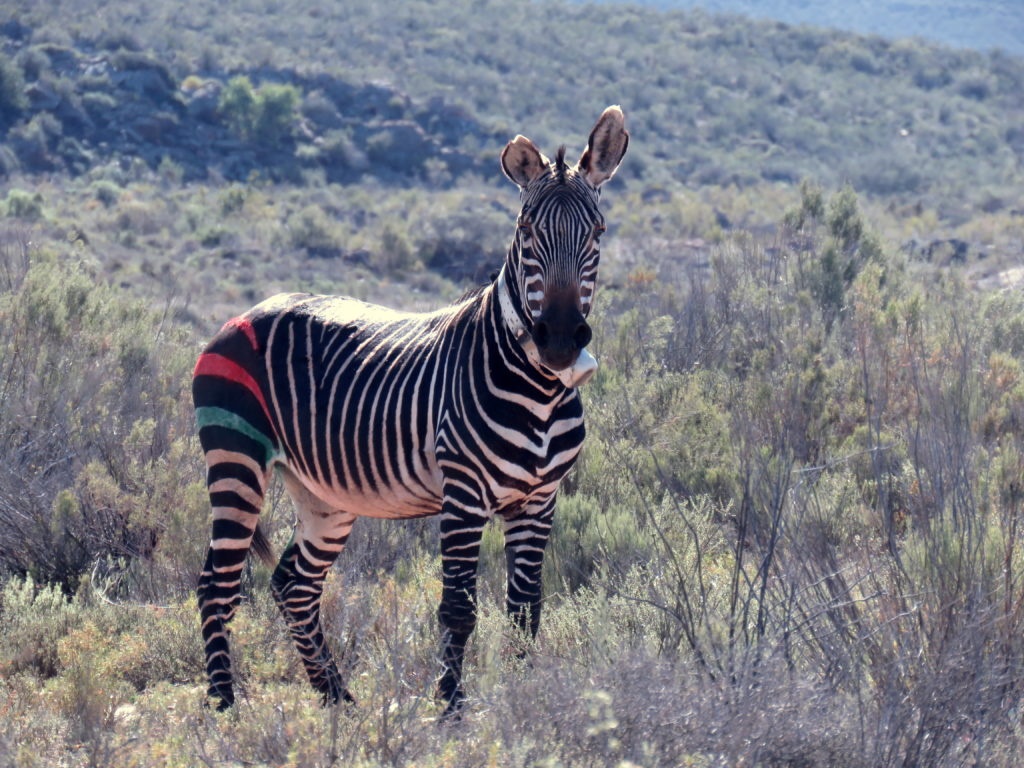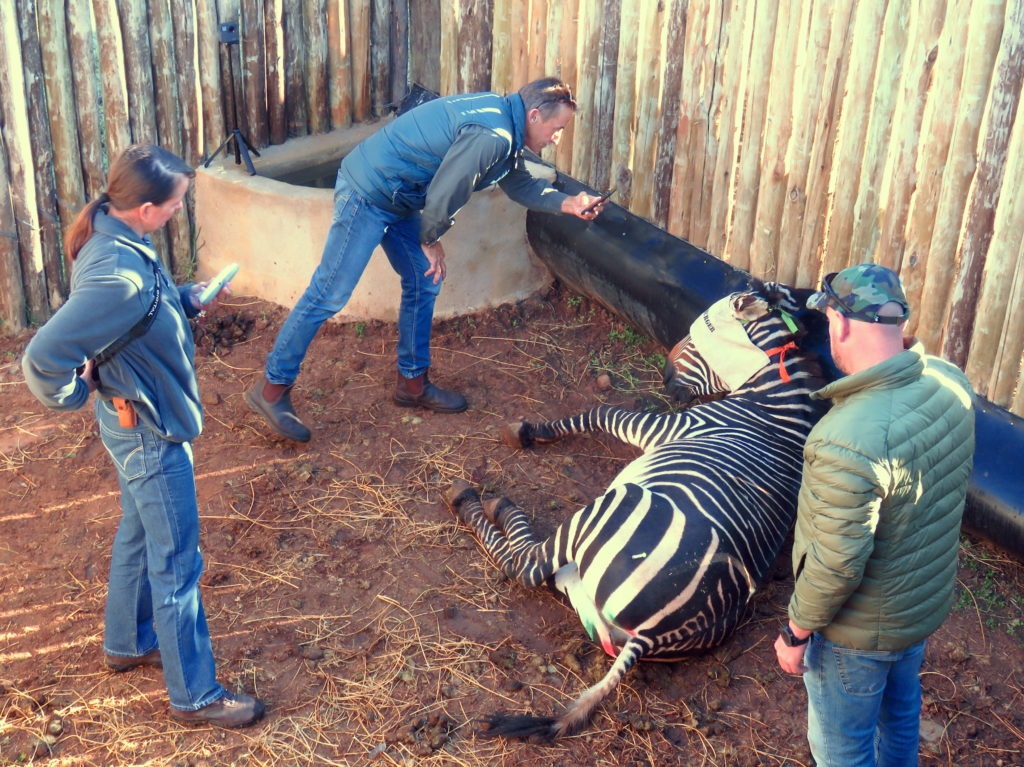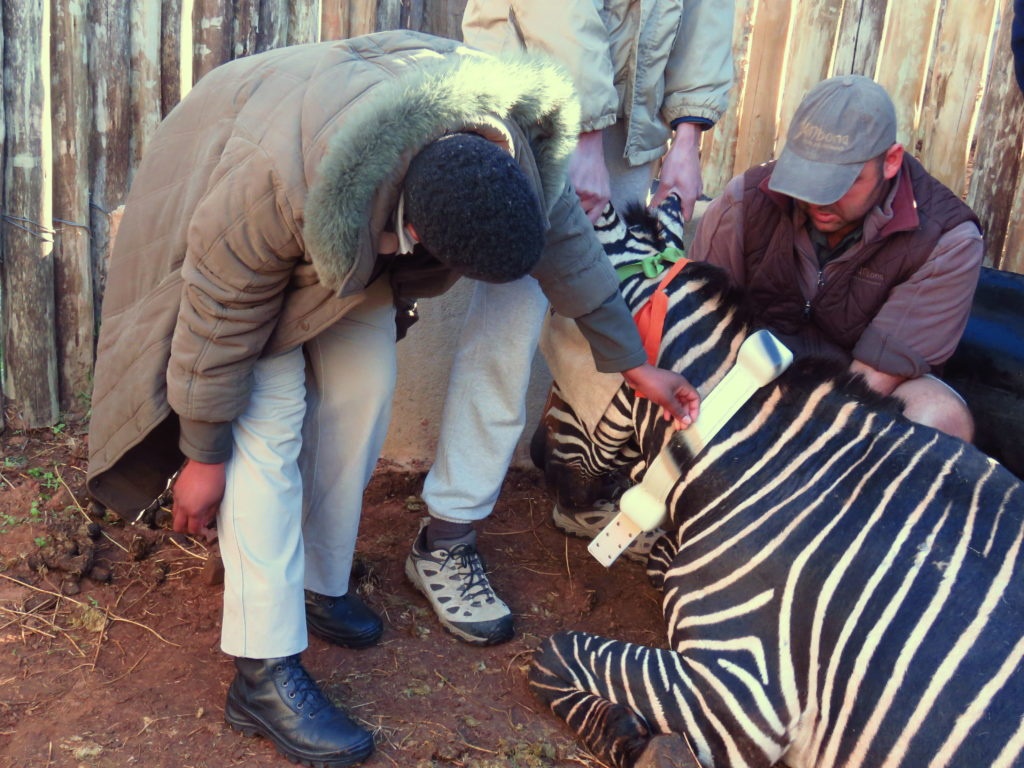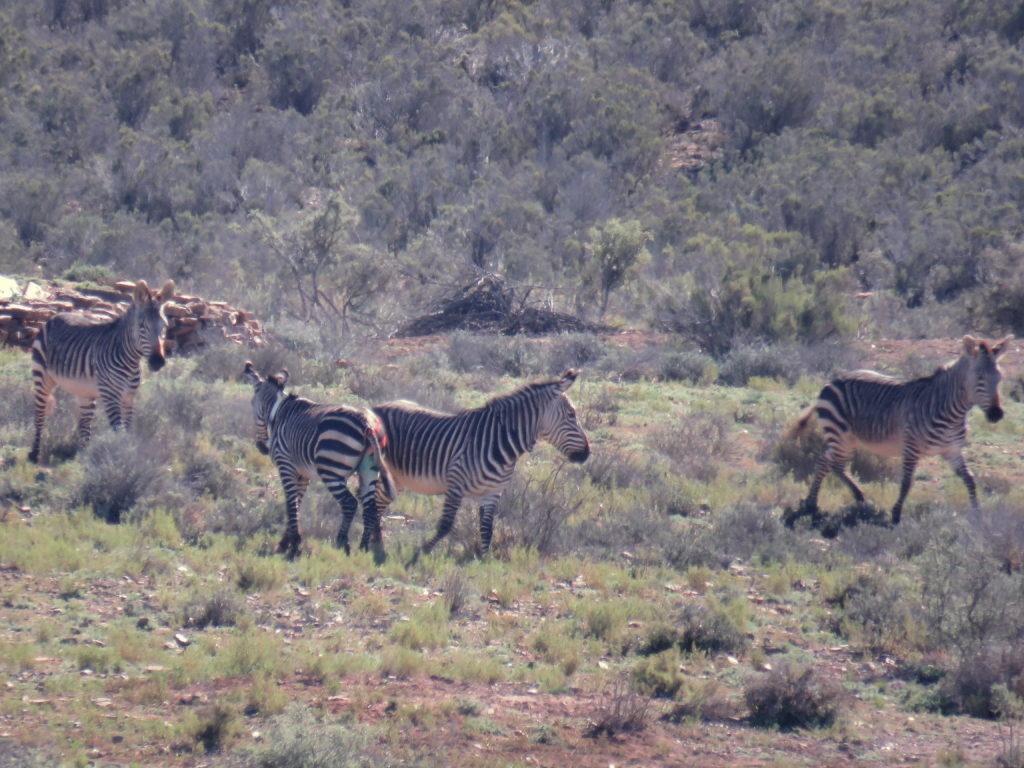Wonders of the Little Karoo — the Sanbona Wildlife Reserve
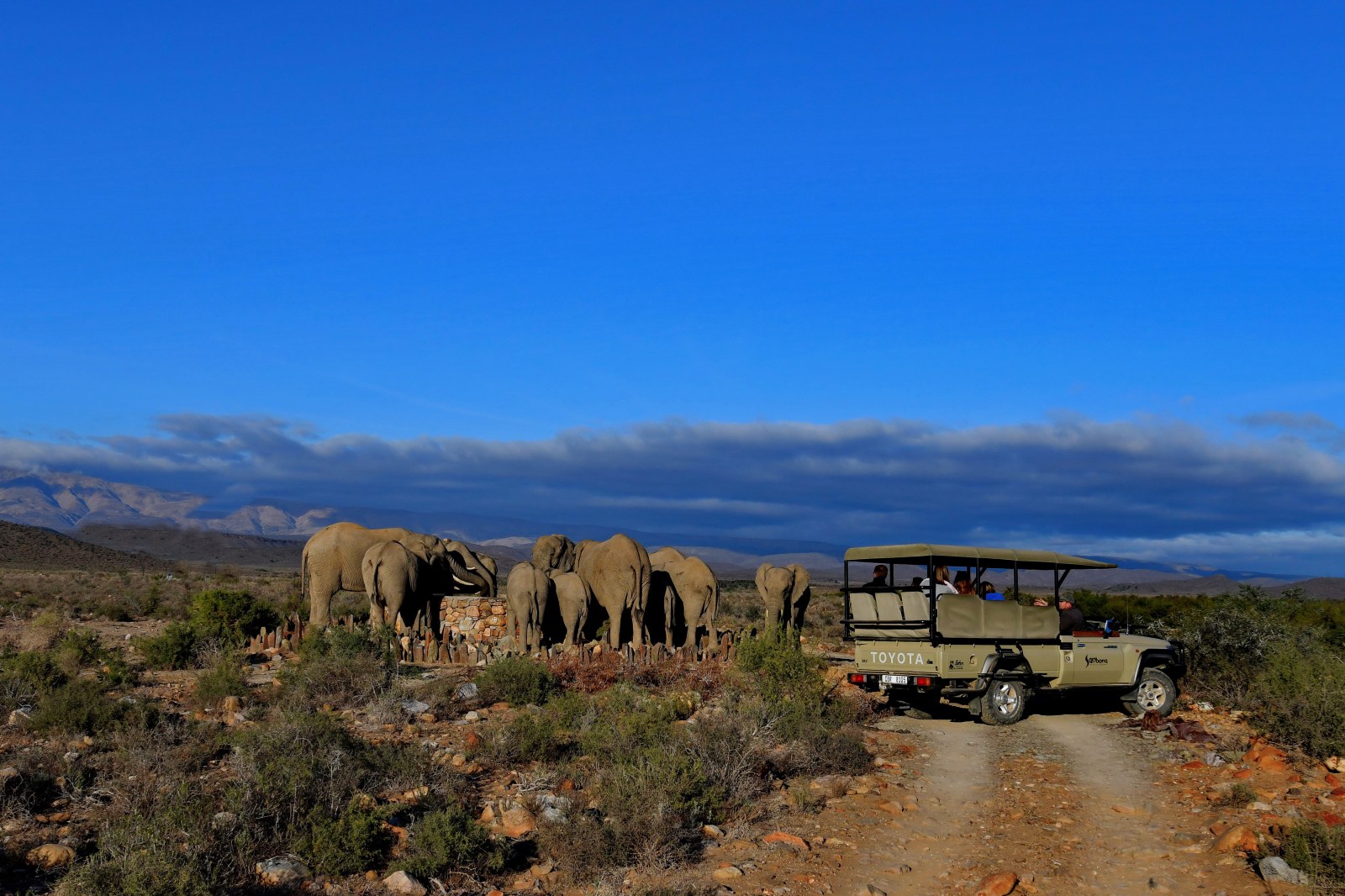 Elephants in the Karoo - Sanbona Wildlife Reserve Guest Experiences. Image: Supplied
By Carmen Clegg | 20 Sep 2022
Elephants in the Karoo - Sanbona Wildlife Reserve Guest Experiences. Image: Supplied
By Carmen Clegg | 20 Sep 2022
Home to the Big Five, this vast territory resembles the ‘land before time’ and is resident to all manner of living beings. Here, history has been preserved, its secrets revealed at the rock art sites dating back 3,500 years.
__________________________________________________________________________________________________________________
As the rubber meets the dirt road that meanders toward the pick-up point at Sanbona Wildlife Reserve, one is instantly surrounded by the sound of silence. It is here that wide open plains, mountaintops and gorges create the foothold above which rest the Warmwaterberg mountains.
This diverse slice of the Little Karoo holds within its basin an impressive kaleidoscope of wildlife, a life force of its own. Here, history has been preserved, its secrets revealed at the rock art sites dating back 3,500 years. This is the land of plenty, a national treasure trove in the heart of the Little Karoo. Archaeologists discovered the tools of the early Stone Age hunter-gatherers, the region’s earliest inhabitants — citing that the region, including what is now called Sanbona, supported Homo sapiens more than 500,000 years ago.
The name Sanbona (“vision of the San”) is in recognition of the San, the original indigenous hunter-gatherers who inhabited the landscape for thousands of years, while bona in many African languages, such as isiXhosa and isiZulu, means “to see”, recalling their view of the Little Karoo, a land once rich in game.
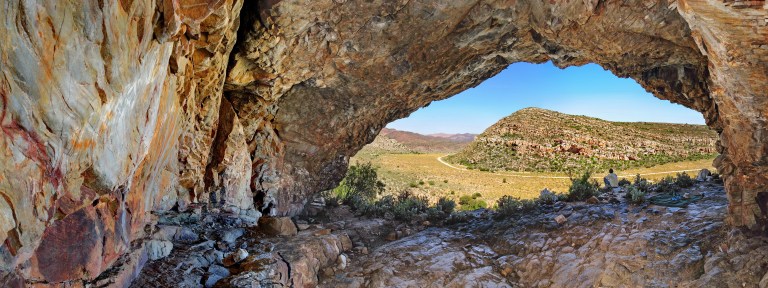
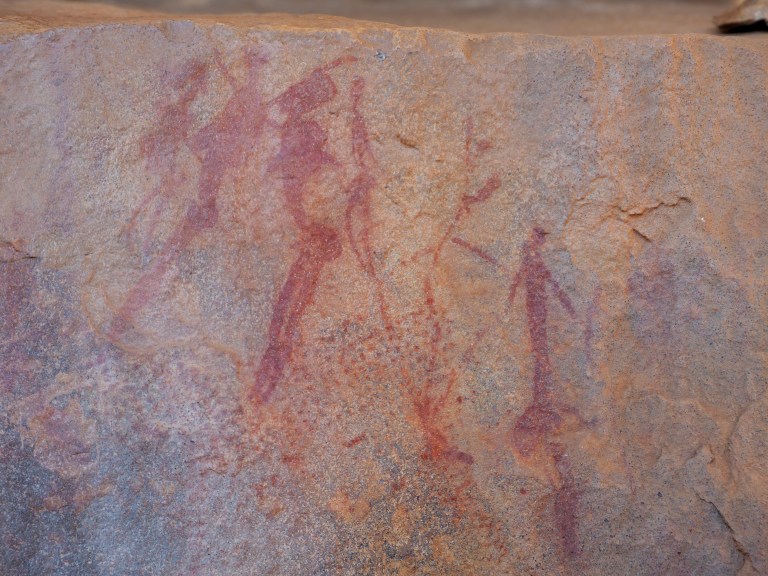 Rock art in the Sanbona Wildlife Reserve. Barrydale. Western Cape. South Africa. Image: Sanbona Wildlife Reserve
Rock art in the Sanbona Wildlife Reserve. Barrydale. Western Cape. South Africa. Image: Sanbona Wildlife Reserve
The San were semi-nomadic; they followed the availability of water, game and edible plants; for millennia, they moved through the land using only what they needed when they needed it. The remaining tangible reminders of the San people’s existence today are their rock art sites, where images have been painted and engraved on the rockfaces of shelters and caves — some of which are visible at Sanbona today.
There, a rehabilitation programme hoping to recreate an ecosystem as close as possible to the way it is thought to have been 300 years ago, gives visitors an immersive and visual experience of the Little Karoo as it was back when the San inhabited it.
The Sanbona Wildlife Reserve
The Sanbona Wildlife Reserve commands 58,000 hectares (a little under the size of Singapore) of Little Karoo landscape, which is made up of two biodiversity hotspots; the land was reclaimed from 19 farms that historically reared livestock and farmed with fruit.
The reserve was conceptualised and created to attract sustainable nature-based tourism as a way of promoting human, social, cultural and economic development while protecting ecosystems that are vulnerable and ecologically sensitive.
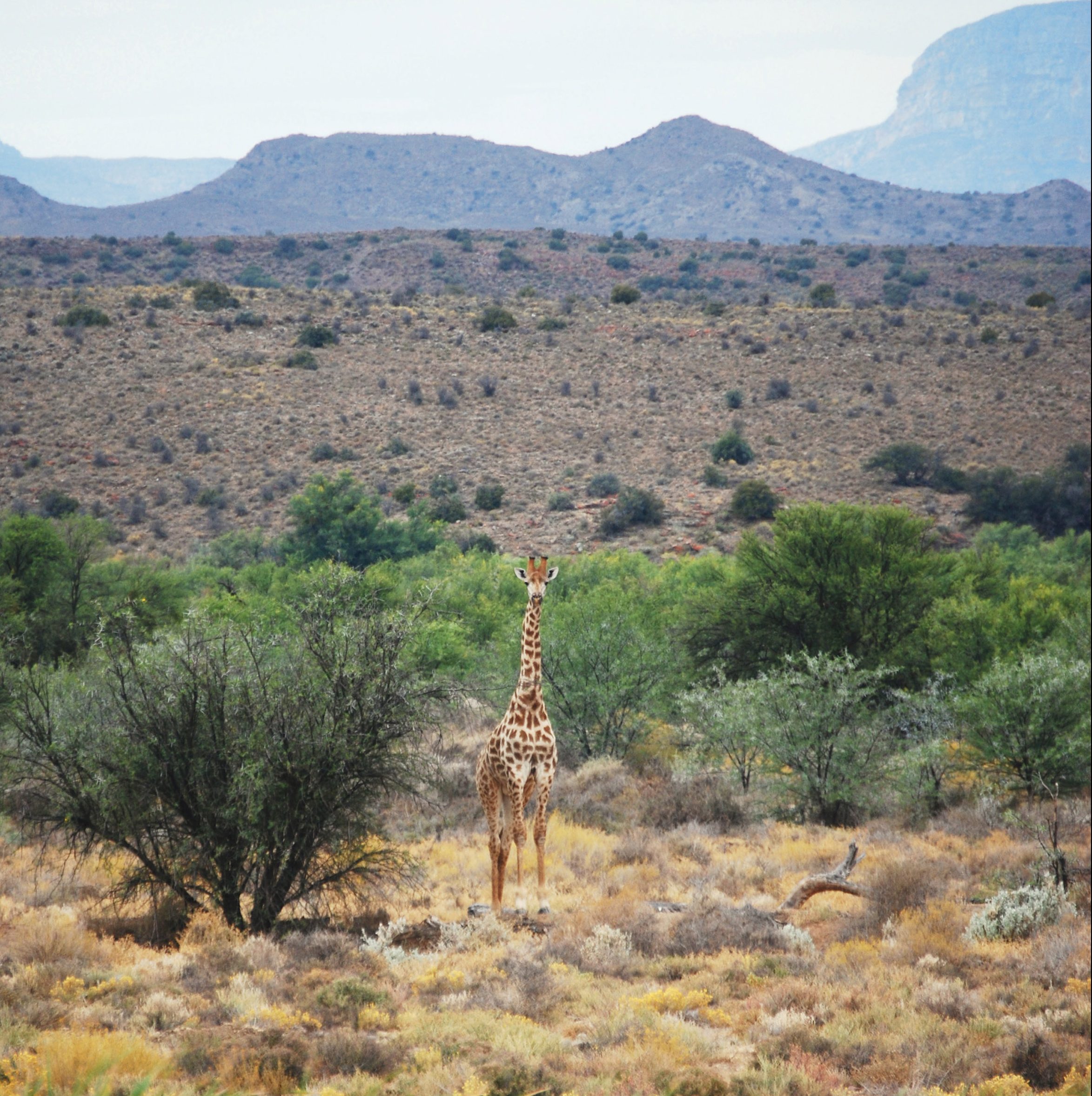 A giraffe seen in the Sanbona Wildlife Reserve. Image: Gallo Images / GO! / Francois Haasbroek
A giraffe seen in the Sanbona Wildlife Reserve. Image: Gallo Images / GO! / Francois Haasbroek
At first light, one can hop on a game drive to spot animals, although a klipspringer, also known as Africa’s “dancing antelope”, meets us right outside our accommodation. These spritely antelope are camouflaged in yellowish grey to reddish brown to protect them from predators as they deftly dance from one rock formation to another.
Further afield, we spot a wide array of antelope: gazing out at the kudu, eland and springbok as they pass us by from varying heights, it is easy to envy their inherent sense of serenity as they stare blankly at us, mid-chew. But springboks don’t lack strategic smarts — they can quickly jump into action when threatened; reaching heights of 2m (a movement known as “pronking”), or attain land speeds of more than 85km/h to escape threatening predators such as lions, cheetahs or jackals.
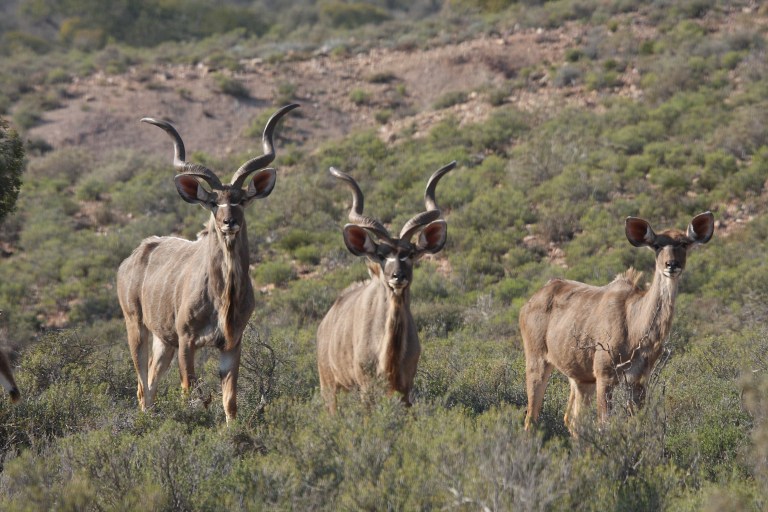 Kudu. Sanbona wildlife. Image: Sanbona Wildlife Reserve
Kudu. Sanbona wildlife. Image: Sanbona Wildlife Reserve
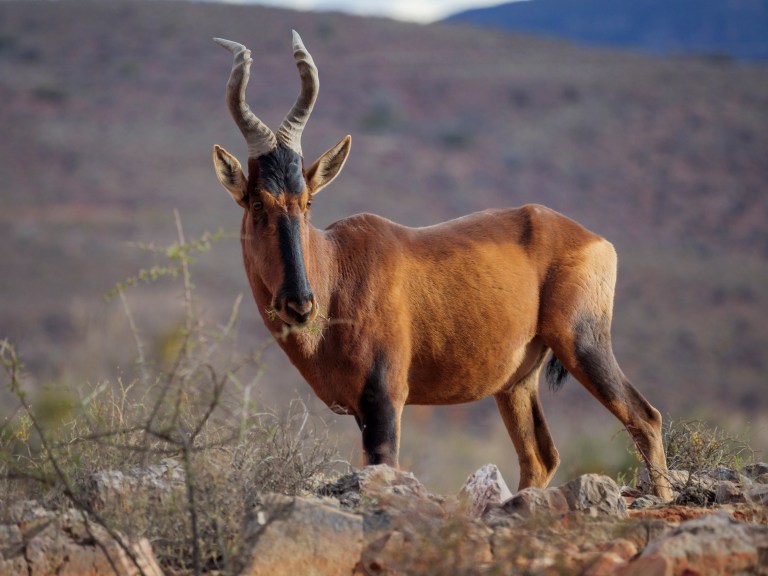 Red hartebeest. Sanbona Wildlife Reserve. Barrydale. Western Cape. South Africa. Image: Sanbona Wildlife Reserve
Red hartebeest. Sanbona Wildlife Reserve. Barrydale. Western Cape. South Africa. Image: Sanbona Wildlife Reserve
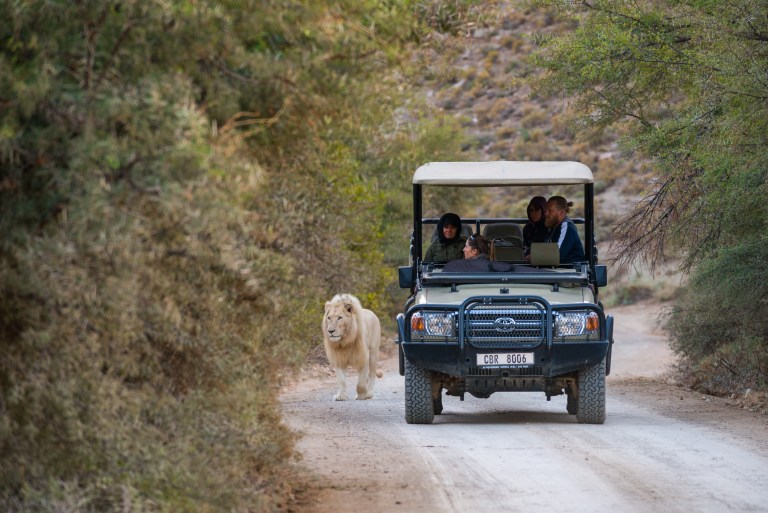 A lion walking in Sanbona Wildlife Reserve. Image: Sanbona Wildlife Reserve
A lion walking in Sanbona Wildlife Reserve. Image: Sanbona Wildlife Reserve
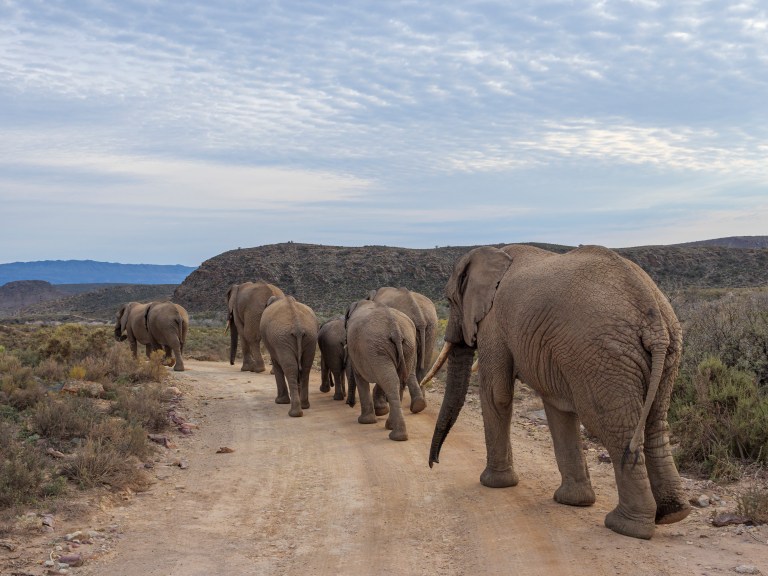 Elephants in the Sanbona Wildlife Reserve. Barrydale. Western Cape. South Africa. Image: Sanbona Wildlife Reserve
Elephants in the Sanbona Wildlife Reserve. Barrydale. Western Cape. South Africa. Image: Sanbona Wildlife Reserve
Although it is seldom seen, the Cape mountain leopard can sometimes be spotted at the reserve. Through decades of having to navigate the arid and treacherous terrain of the Little Karoo, these leopards have become smaller in size (compared to their counterparts) as they have had to adapt to the arid semi-desert landscape.
In 2003, Sanbona Wildlife Reserve became the very first protected area in the Western Cape to reintroduce cheetahs back into the wild.
As the game drive continues, we make our way through a never-ending sea of kraalbos (Galenia africana), colourful in anticipation of summer; we also spot the prickly sweet thorn tree (Acacia karroo). The tree of life, as it is commonly called, has one of the highest nutritional levels of all the plants and requires multiple survival strategies: the more the animals feed on the thorns, the more thorns the tree produces so as to sustain and grow. Elephants feast on the branches, leaves and thorns and the seeds pass through the digestive system of the large herbivores, the droppings producing new life and thus another cycle of a sweet thorn tree begins.
Dominated by regional endemics, succulents here are classified as Little Karoo Quartz Vygieveld. Within these outcrops, the succulent species may differ due to the difference in the underlying soils.
The salt pan, which has a relatively low salt content, is littered with succulent species, from determined Haaibekkies (Gibbaeum pubescens) — which, as their name suggests, are shaped like little shark mouths — that only grow on quartz patches in the Little Karoo and can live up to 100 years; to the popular Baby Bums (Gibbaeum heathii) which are rounded and smooth. Both species are locally abundant in quartz outcrops.
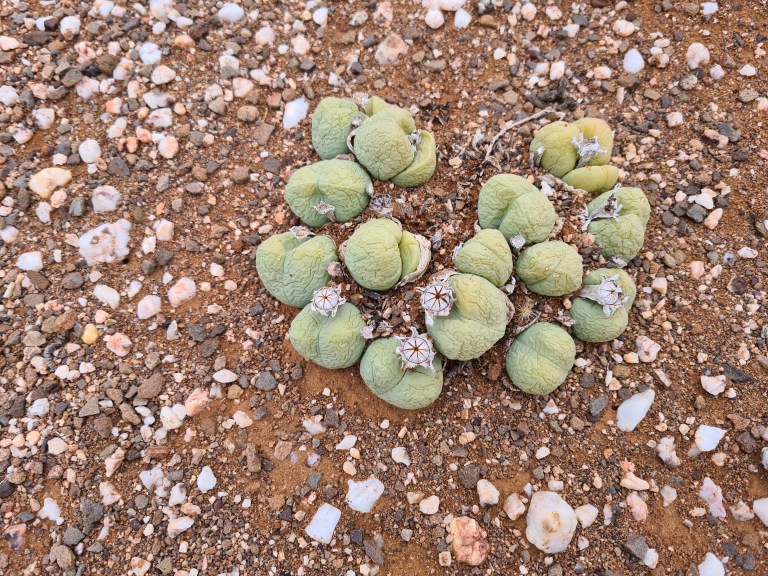 Living stone succulents. Image: Carmen Clegg
Living stone succulents. Image: Carmen Clegg
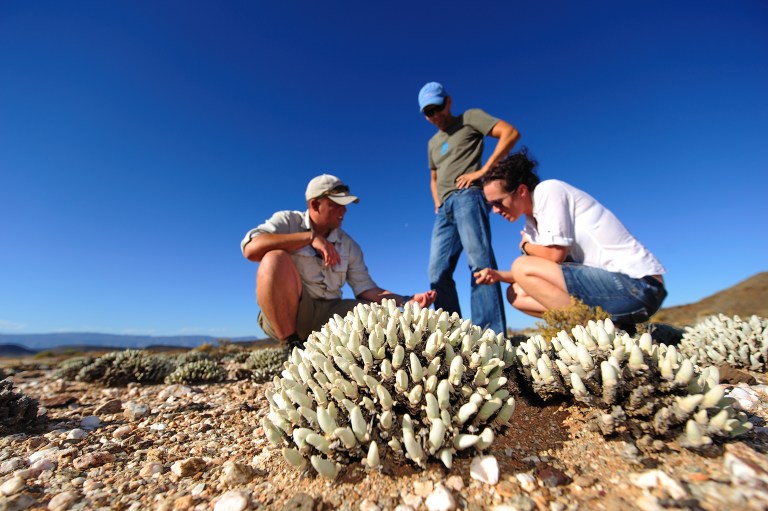 Sanbona Wildlife Reserve, Interiors, Exteriors and Guest Experience. Image:Sanbona Wildlife Reserve
Sanbona Wildlife Reserve, Interiors, Exteriors and Guest Experience. Image:Sanbona Wildlife Reserve
The number of plant species, mostly succulents, is unparalleled in the world for an arid area of this size. There are at least 1,600 succulent species in this biome, an impressive 16% of the world’s estimated 10,000 succulents.
As dusk draws near, amplified by a cacophony of nocturnal noises, we are beckoned home to the warm fireplace that awaits us at the five-star Dwyka Tented Lodge. Minutes before arriving we are met with one last surprise encounter.
Watching us from a mere metre away is a critically endangered riverine rabbit. It is estimated that only 250 adults remain, scattered across the vast Little Karoo. They are endemic to South Africa but they are also one of the most difficult animals to see in the wild, as well as to conserve; they are strikingly beautiful with their reddish-brown coats and mesmerising stare.
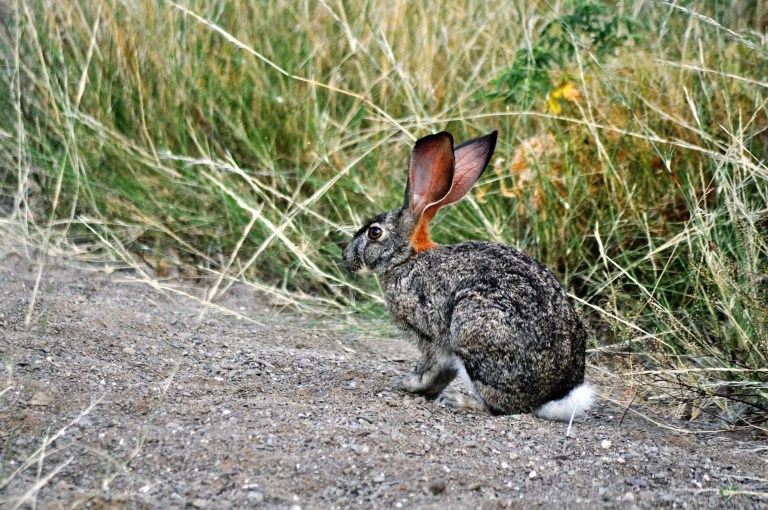 Riverine rabbit. Sanbona Wildlife. Image: Sanbona Wildlife Reserve
Riverine rabbit. Sanbona Wildlife. Image: Sanbona Wildlife Reserve
The day has evaporated and nighttime ensues, assured that tomorrow the conservation of life will continue.
Where to stay
- There are four luxury accommodation options: set in a horseshoe bend of a dry Karoo ravine is the eco-friendly Dwyka Tented Lodge.
- The family-friendly Gondwana Family Lodge is a thatched Karoo homestead that overlooks the Bellair Dam.
- The historical Tilney Manor offers privacy with breathtaking views and is surrounded by mountains and plains.
- For the adventurer, the Sanbona Explorer Camp is situated in the heart of the reserve and ensures camping in style lit up by a blazing campfire.
The road there
- Sanbona Wildlife Reserve is approximately 270 km from Cape Town.
- Take the N1 highway in the direction of Paarl; once through the tunnel, take the second turnoff to the right into Worcester (R60) and follow the signs to Robertson.
- Drive through Robertson, still on the R60, into Ashton.
- Proceed through Ashton — the R60 becomes the R62.
- Carry on through Kogmanskloof and Montagu.
- About 43km from Montagu, turn left at Die Vlakte and Sanbona Reserve sign.
- Continue for 7km to reach the main entrance.
- Proceed for another 15km to reach the Welcome Lounge.
DM/ML
